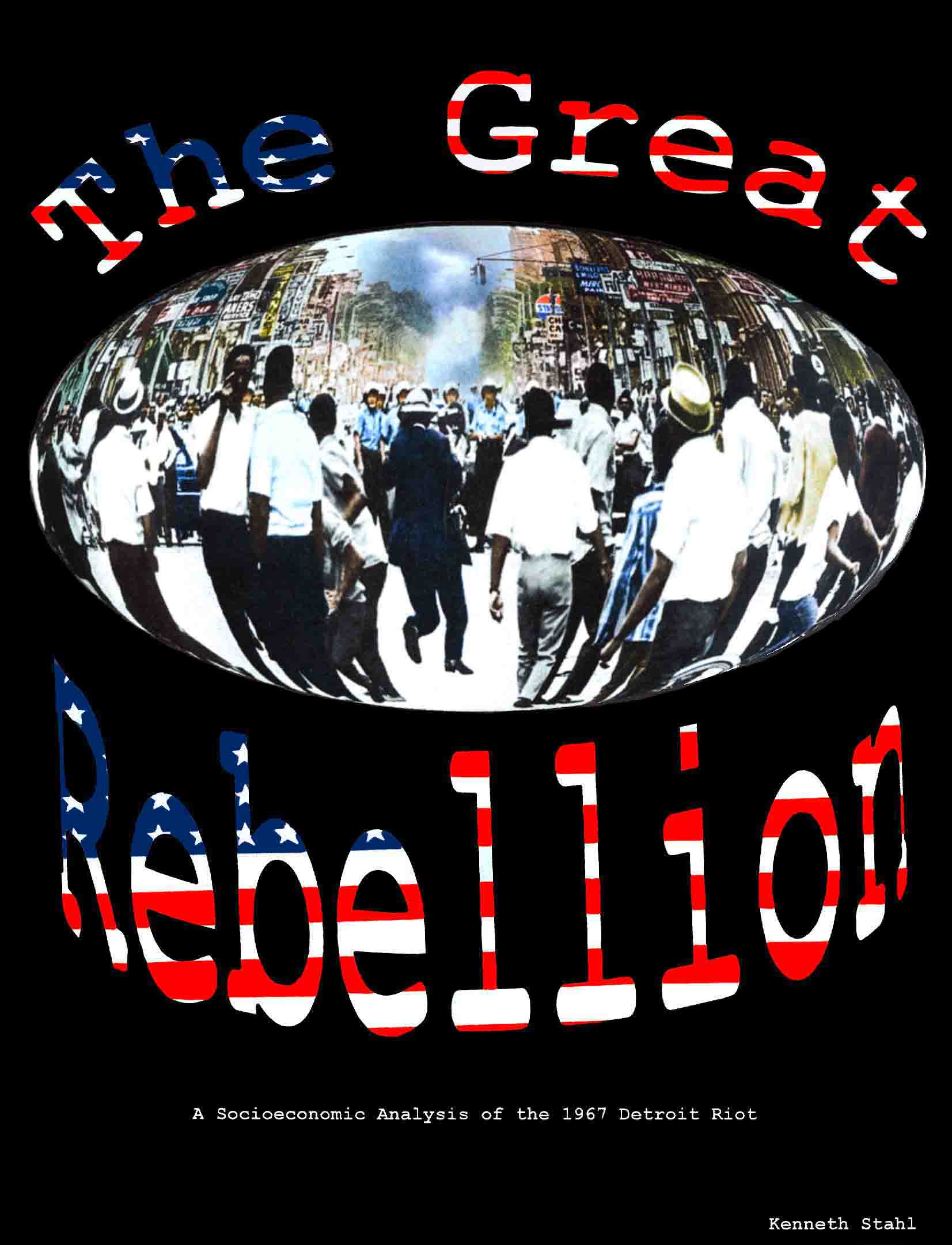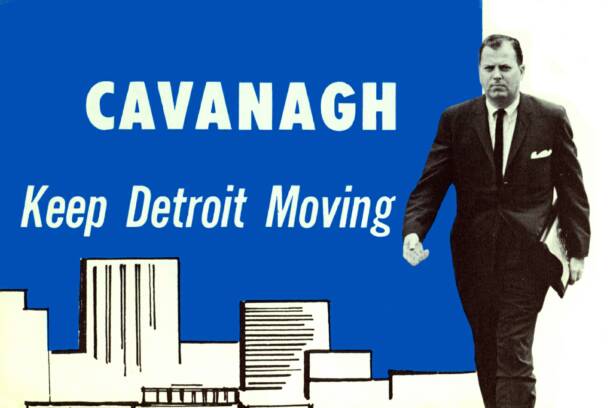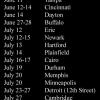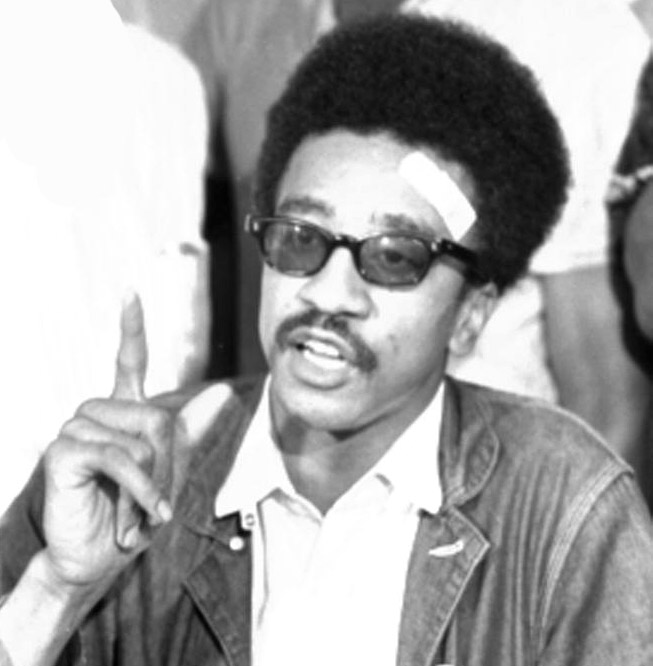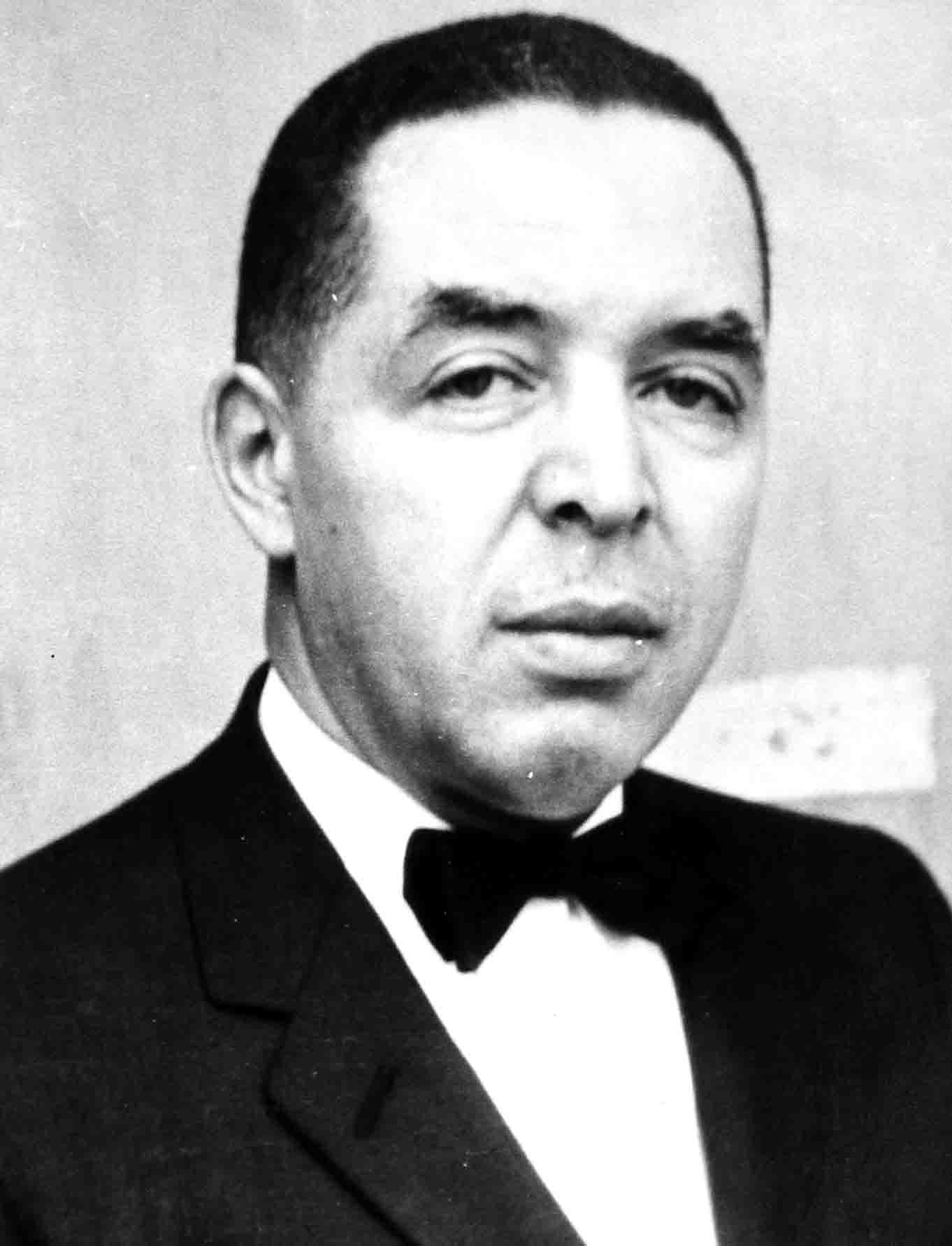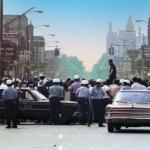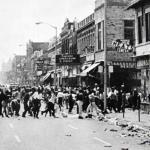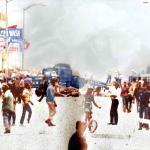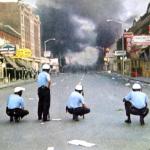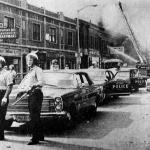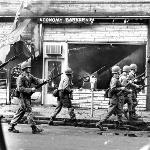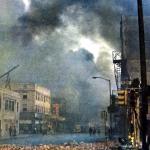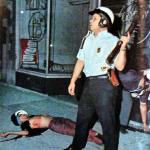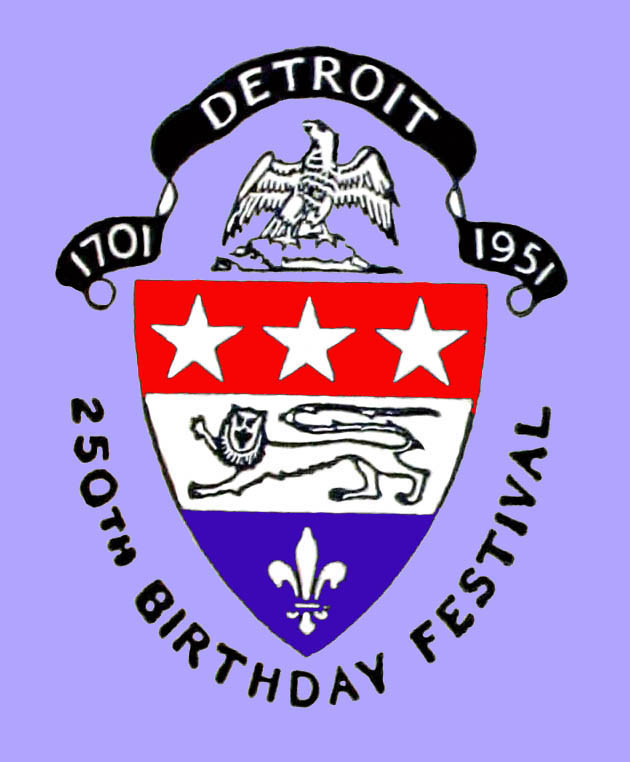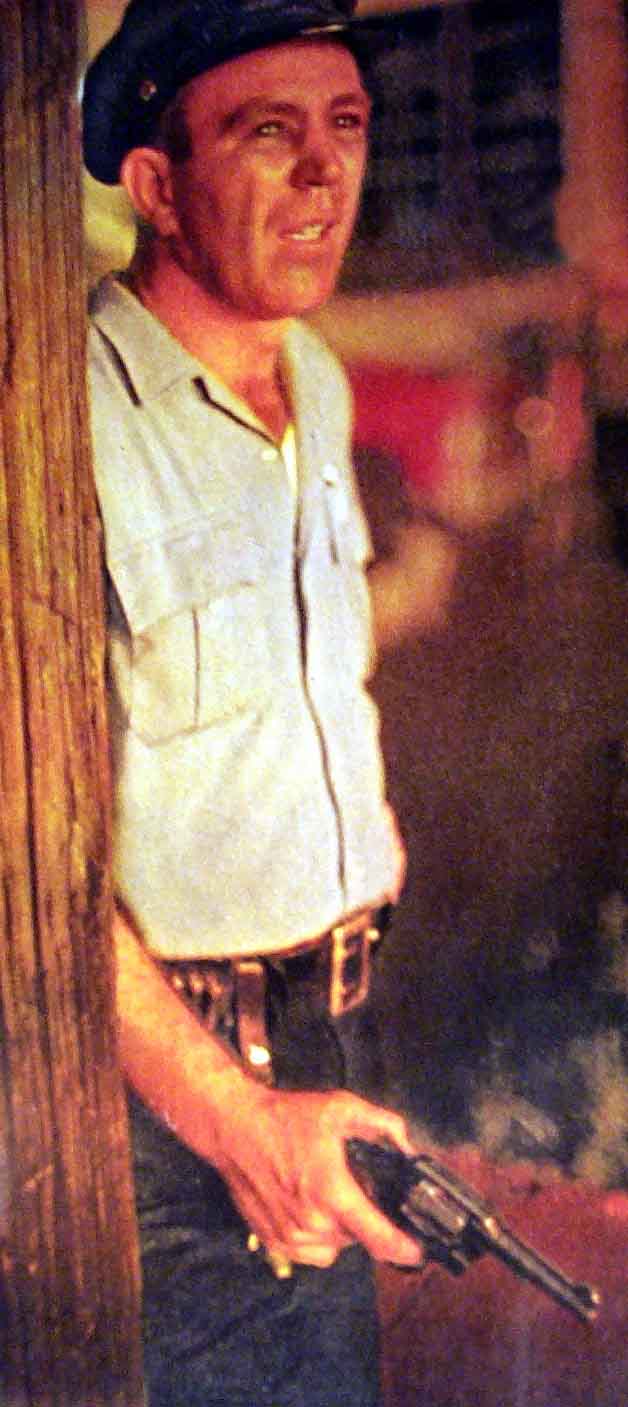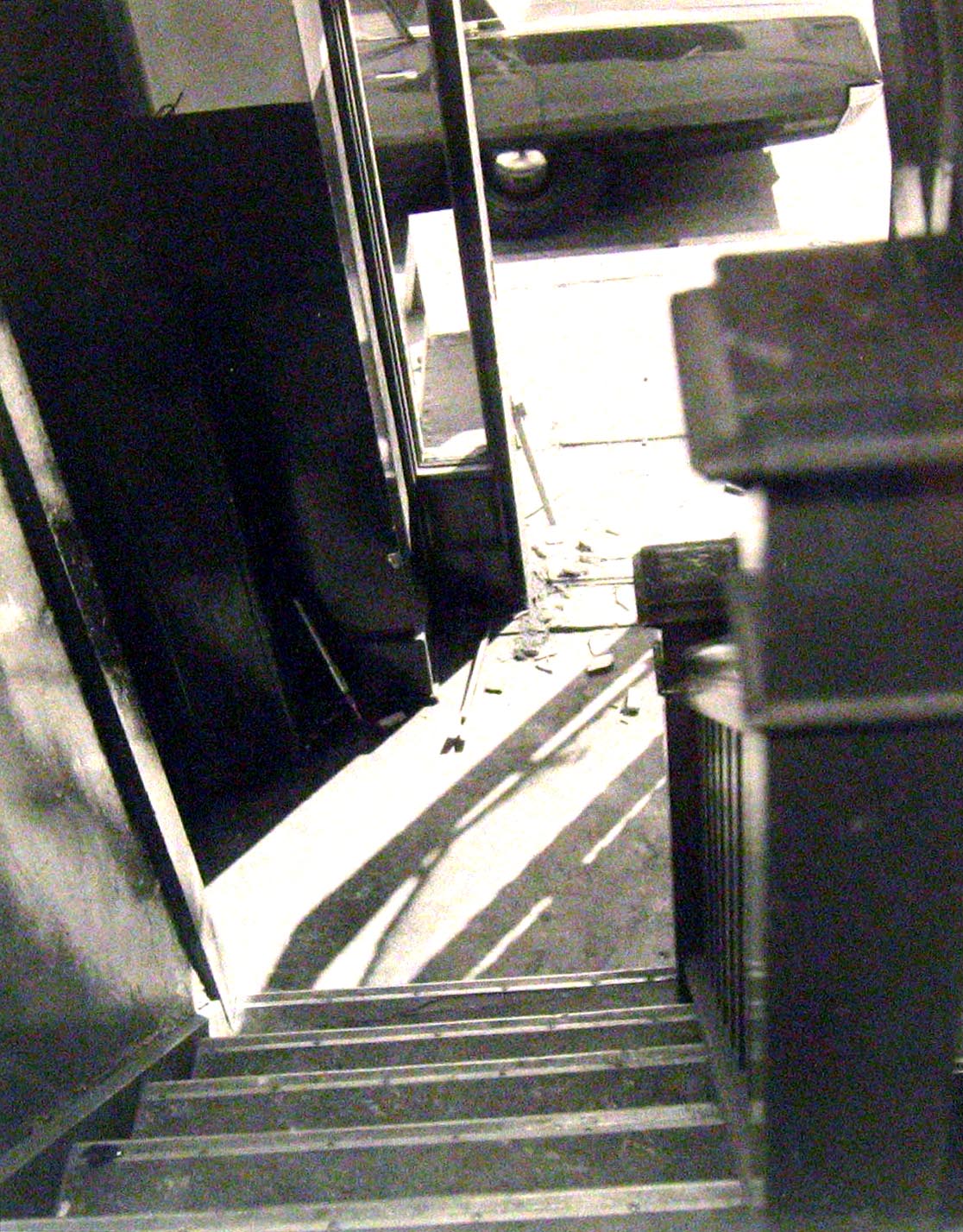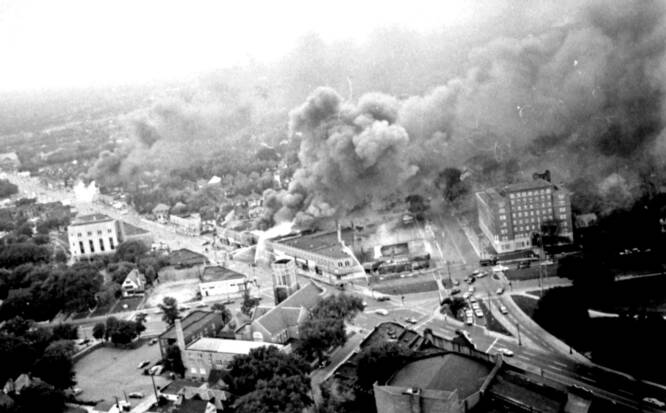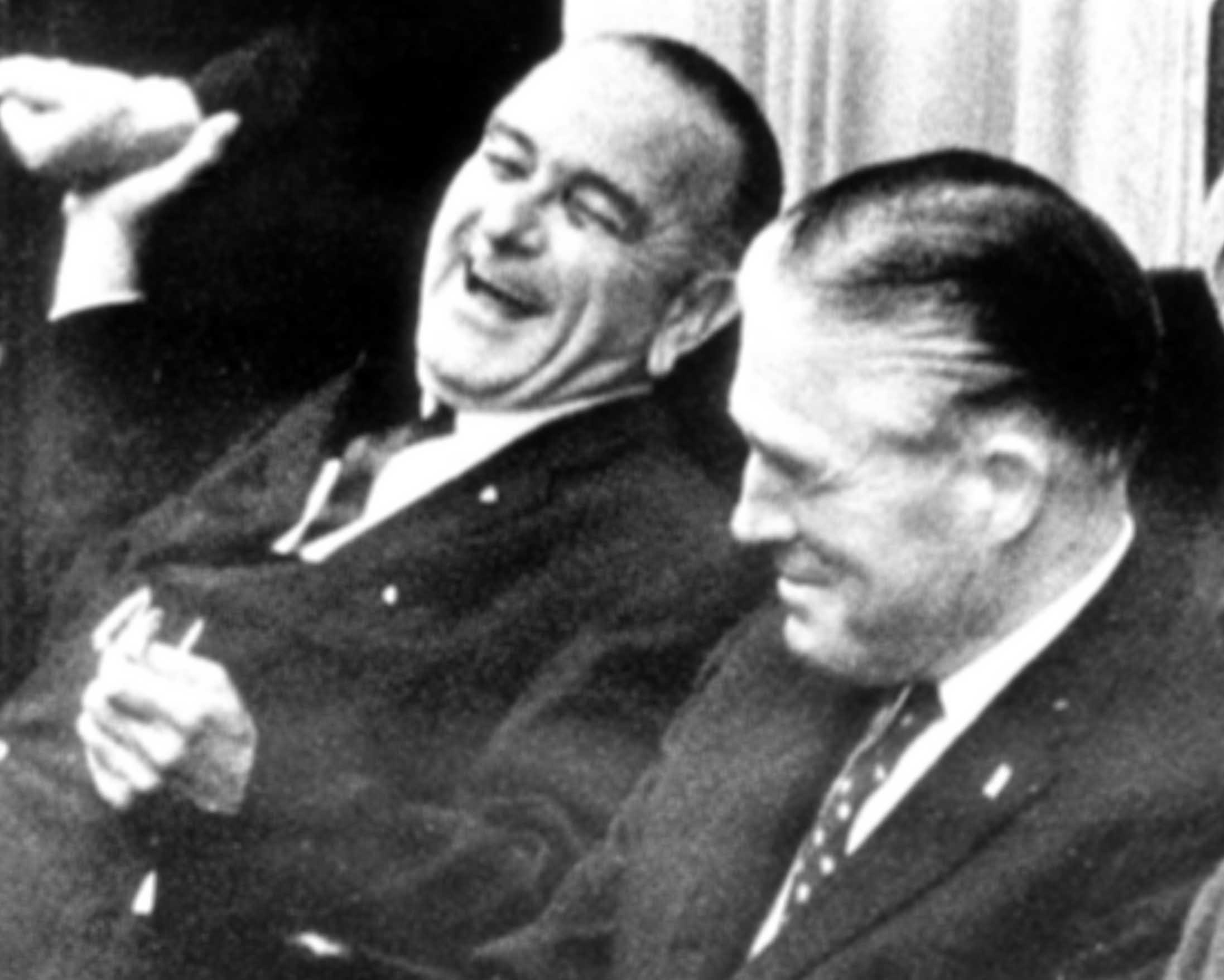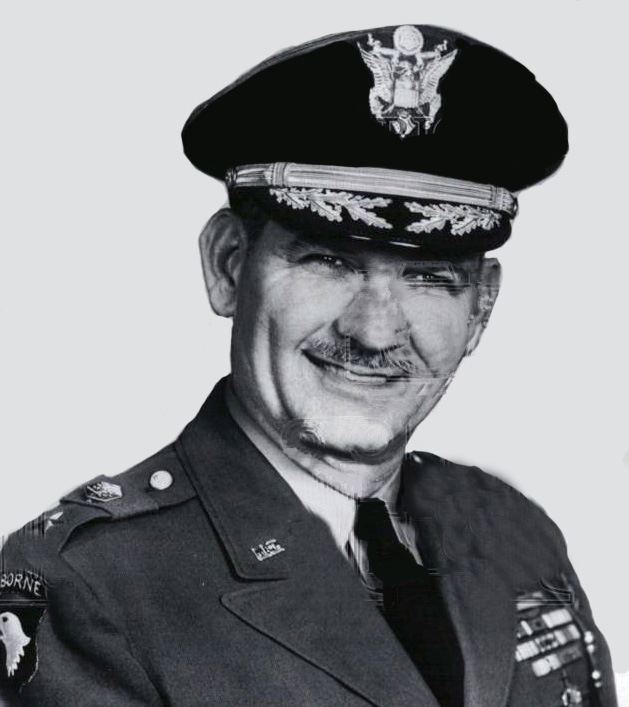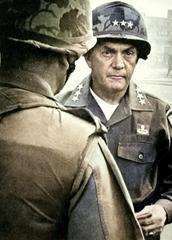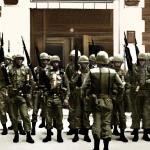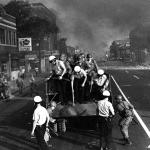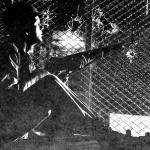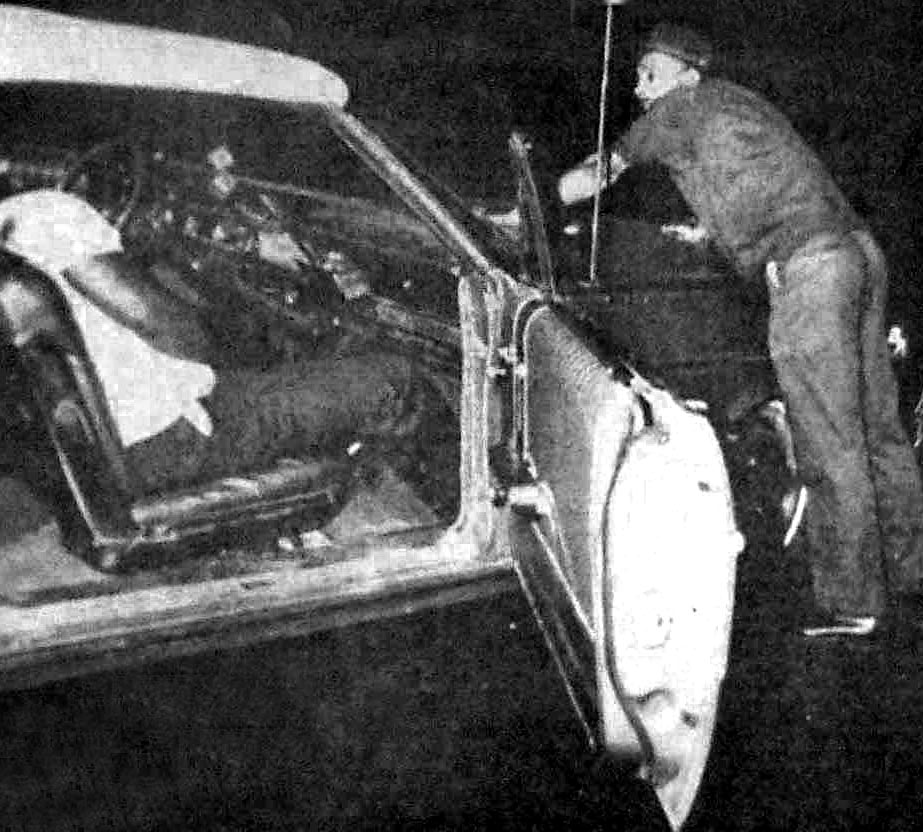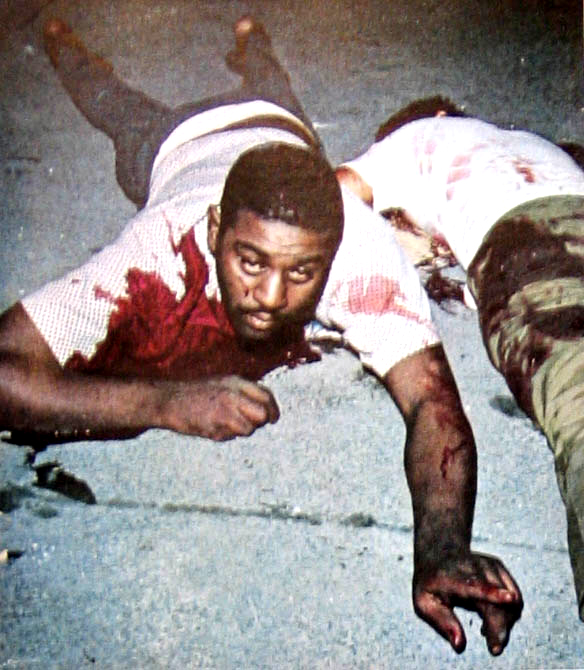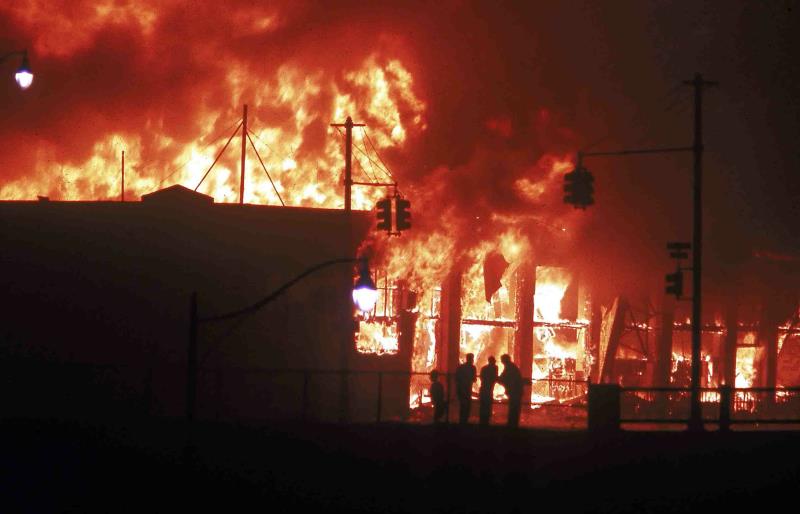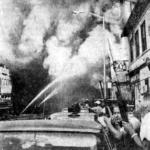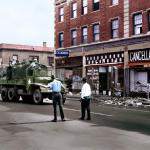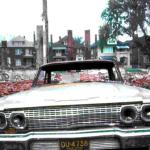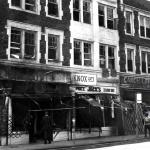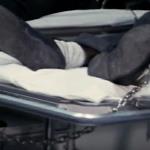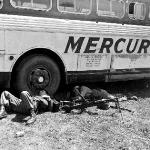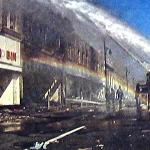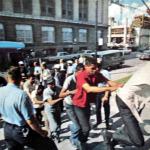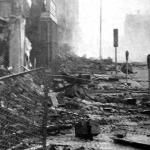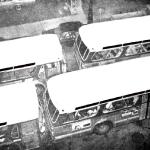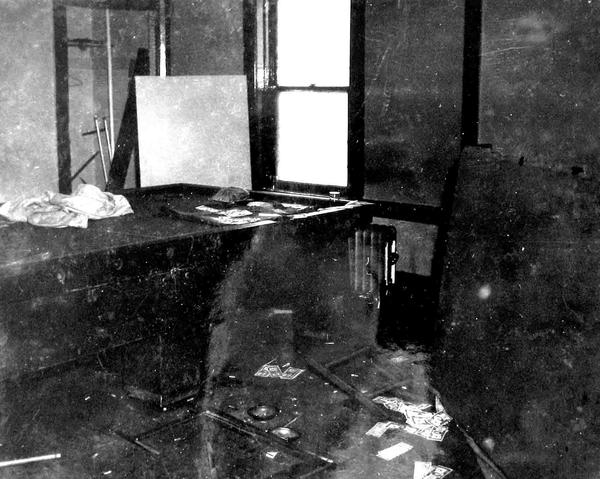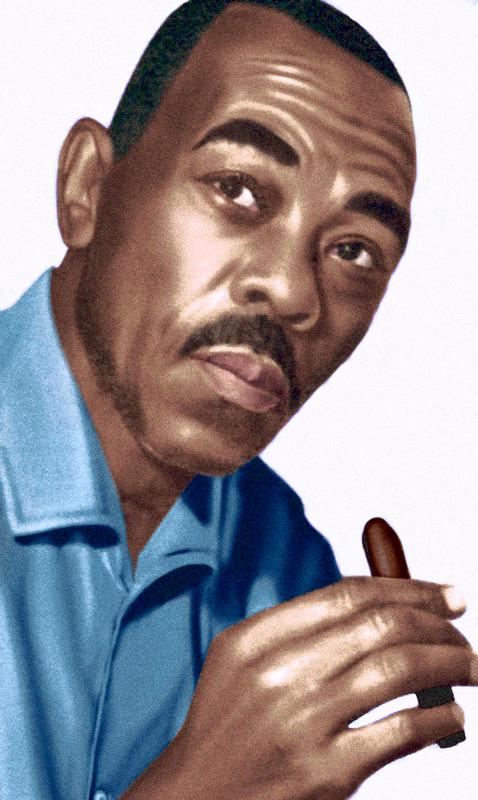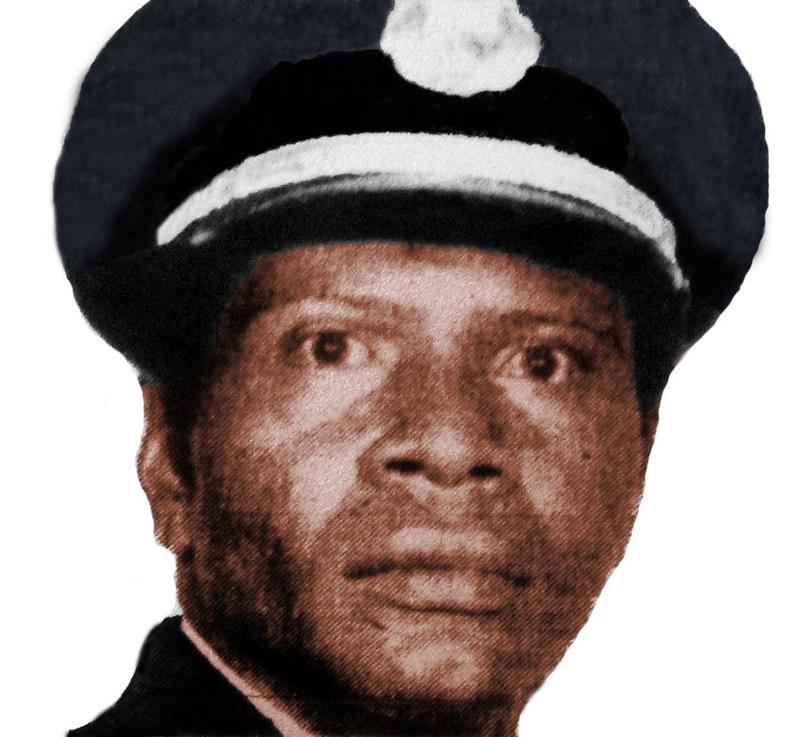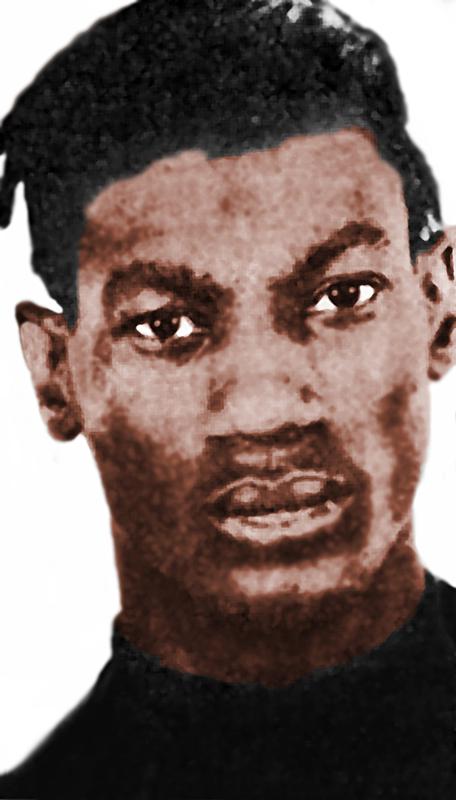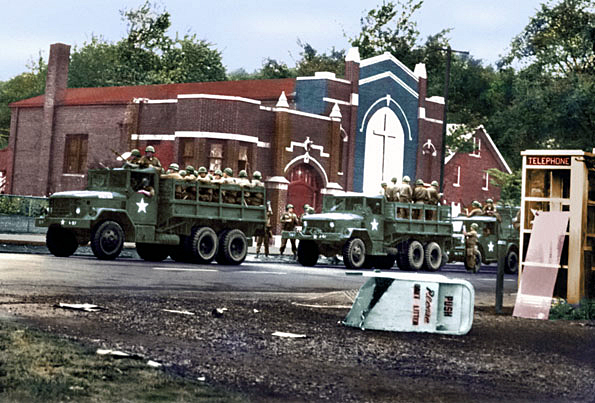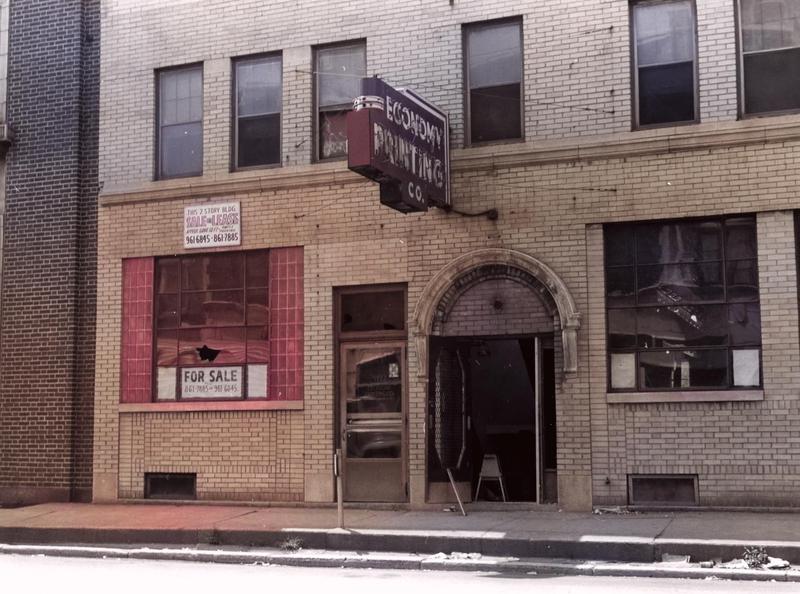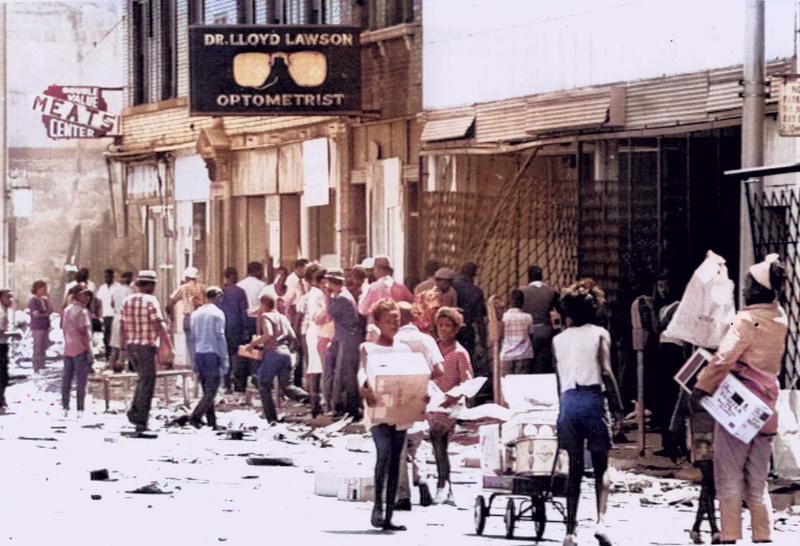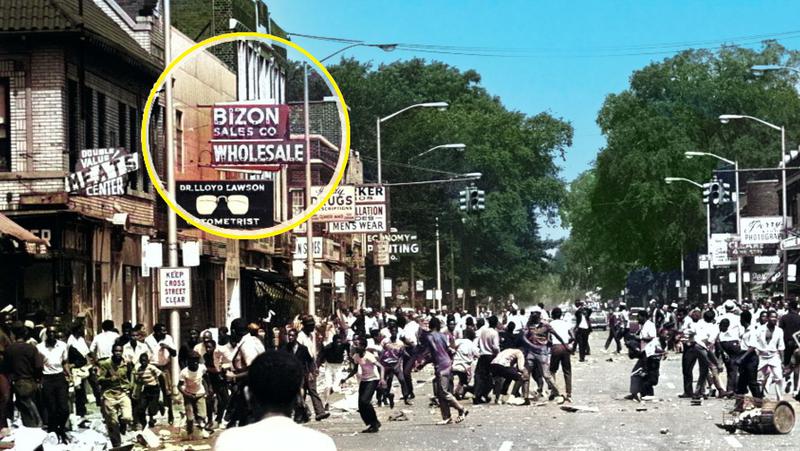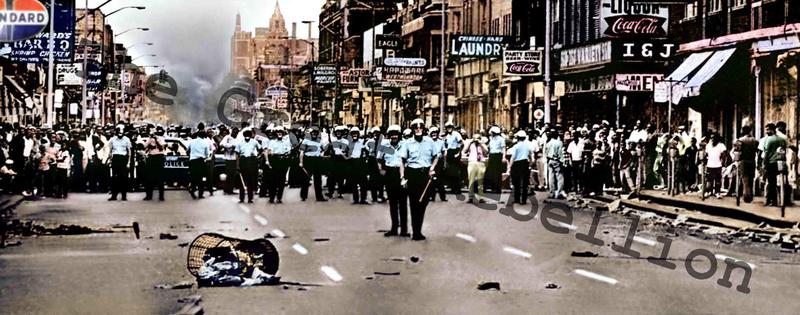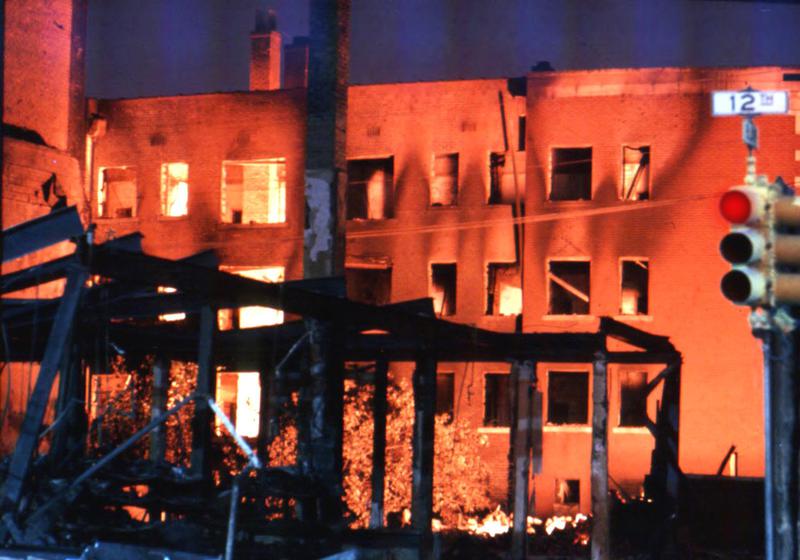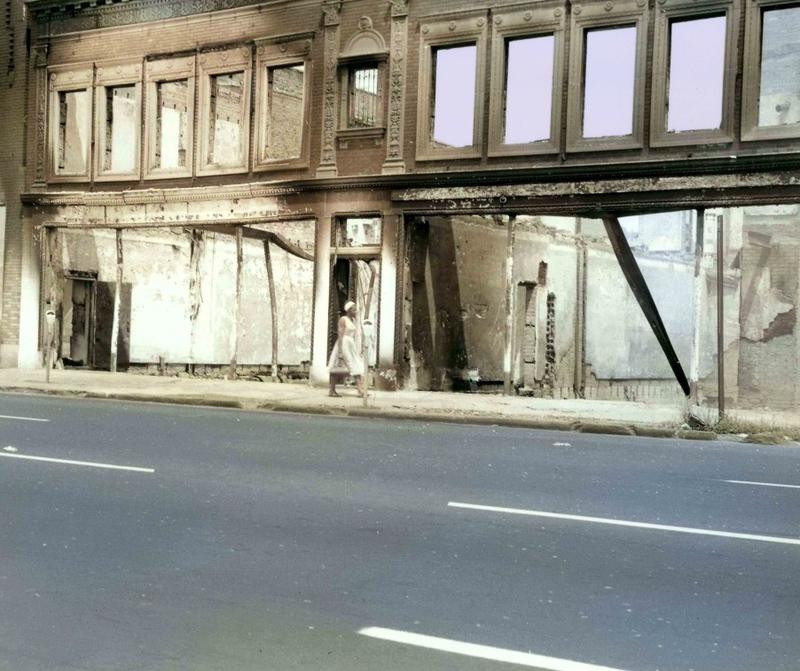For many, it seemed incredible that “only” forty-three people had died during the riot. With tens of thousands of bullets filling the air and fire engulfing entire neighborhoods, it seemed a peculiarly low number, but it is the number that stands to this day. It is impossible to determine with any degree of accuracy how many snipers there were, but if even a fraction of the police reports were correct, sniping was more prevalent in Detroit than all previous riots combined. Fortunately, they were poorly equipped with little training for their intended purpose or the death toll would have been frightfully higher.
The heart-wrenching stories range from a police officer killed two days away from retirement to a four-year-old girl whose world of dolls and tea parties ended in a hail of bullets meant for someone else. Other stories, such as the Algiers motel incident, remain shrouded in mystery to this day. They are all a tragic part of a bigger element - the death of a city that once held world prominence.
For the Baby Boomers who were just coming of age during the turbulent 60s, this book is a chance to revisit their youth. Many of their most formative impressions they carried with them throughout life pivoted off these events. Caught up in the emotion of the era, sentiment often dictated personal ideologies. Now that the dust has settled, new perspectives can be explored.
While history has painted Detroit into a unique and ugly corner of fate, the reality of the situation is that any big city in the country could have shared this distinction albeit for a few transitional strokes of luck. Detroit's biggest problem isn't black or white, it is green. This book proves out this thesis.
This book is an 8.5 x 11 hard cover, 376 pages and over 350 photos.
The price is $20. There is a 30 day money back guarantee.
ISBN 978-0-9799157-0-3
To order this book
Make checks payable to :
Kenneth Stahl
P.O. Box 510771
Livonia, Michigan 48150
This page was last updated: December 20, 2025
“Rioting is the voice of the unheard,” said Martin Luther King. The urban riots that occurred during the 1960s were a unique strain of madness, a blind man’s bluff of aimless fury that was essentially American’s Second Civil War. If viewed in its entirety, the causes of the 1967 Detroit Riot, Detroit’s Great Rebellion, would look something like a great layer cake with each layer representing a different time period in Detroit’s history and rage being the all-encompassing frosting. Slavery, the abysmal failure of Reconstruction, the calamitous Jim Crow era and urban decay, all slowly metastasized into the violent convulsions of the 1960s riots. America paid a terrible price for its centuries of racial intolerance. It took a contagion of uprisings across the country to get that point across. As the specter of Detroit’s Great Rebellion continues to fade into the shadows of memory, one question continues to haunt us: What have we learned?
Saturday July 22, 1967, found Detroit in the middle of an oppressive heat wave. It had regularly approached 90 degrees in a neighborhood where air conditioning was as rare as a presidential visit. It was eerily similar to the searing June day in 1943 that spilled the blood of Detroiters all over Woodward Avenue and opened a gaping wound in the soul of the city. It was, after twenty-four years, blood that never dried.
Early Sunday morning, July 23, Detroit police raided a blind pig on the city's notorious 12th Street and triggered the biggest riot in American history. Why Detroit? There were 300 urban riots between the East coast riots of 1964 and the Detroit riot in July of 1967. Summer after long hot summer, American cities were being put to the torch. One city magically seemed to be getting skipped; Detroit. Why?
The Great Rebellion
A Socio-economic Analysis of the 1967 Detroit Riot
From President Johnson on down, Detroit was seen as the Model City because of its progressive young mayor, Jerome Cavanagh, an FDR disciple. Cavanagh's meteoric rise would put Detroit back on a national pedestal of prominence but his stunning success would be short lived.
The ill-fated 12th Street one week before the riot. One of the old 12th Street regulars described its twisted dichotomy: “There was a daytime 12th Street, and there was a nighttime 12th Street, and they didn’t overlap. During the day the good citizens came out like your mother. All the hustlers that were out there knew that your mother wasn’t into that stuff, so she just came shopping. But come dark, mama goes home, gets off the street, and the night shift comes on.” Known as the Sin Strip, Avenue of Fun or the Pocket Ghetto, anything you wanted, legal or illegal, you could get on 12th Street.
The Raid - Lighting the Fuse
Acknowledging defeat, Howison took his crew and moved on, there were other blind pigs to bust. By 3:30 in the morning, however, they were still unsuccessful. Almost ready to call it a night, they found themselves coincidentally passing Economy Printing again when patrolmen Henry noticed three young ladies heading for the front door. On a hunch, he exited the car and quickly mixed in with the group. The peephole opened and the very same doorman who had curtly refused him five hours earlier, now foggy-eyed from drinking, gleefully waved the group by. The raid was on!
The infamous Economy Printing, which hosted the notorious party that brought Detroit to its knees, ironically managed to survive the riot virtually unscathed, while much of 12th Street burned to the ground. The police raid would prove to be, as one local appropriately phrased it, “the most expensive pinch in history.”
Above, right: The stairwell of Economy Printing, the police pry bar used to gain entry still sits on the floor just inside the door.
Patrolman Henry, a future police commander, later commented on what transpired next. “I had trouble getting in. There was a pool table they’d used to shoot dice, a bar, a kitchen that served food. It looked like a third-rate bar. People were having a good time. There were different circumstances in those days. People were friendlier, they would drink and gamble, but there was very little dope. Customers had no fear of a jail sentence. Especially in the 10th Precinct, along Twelfth Street (a police raid) was a common occurrence.”
Pandemonium ensued. Howison was as taken back as anyone when he found not the usual fifteen to twenty party goers but a staggering eighty-three! Howison believed some of the midnight revelers had outstanding warrants so the decision was made to haul them all in. It was a fatal decision. This presented him with a difficult dilemma. The 10th Precinct possessed only one paddy wagon which held fourteen prisoners at most. Phone calls were made to the adjoining 6th, 11th and 13th Precincts to quickly send their wagons over, but this would take time. In the interim, the prisoners were held upstairs.
Outside on 12th Street, the commotion of the police cruisers was beginning to draw a crowd. This was the norm on 12th Street as people wandered about from party to party in numbers all through the night. At first there were only twenty some people quietly watching from across the street, 12th Street regulars with wine clouded eyes, drinking a wobbly path back home. As the first paddy wagon arrived and Howison brought down the first group of prisoners, the streetwalkers directed some good-natured mocking towards the familiar faces.
Like a ticking bomb, the agonizing minutes clicked by as the police awaited the next wagon. The crowd outside, which originally numbered twenty around 4:00 a.m., quickly multiplied to fifty, then one hundred, then two hundred. An incensed young black man, known to the police only as Green Sleeves because he was wearing a long green sleeved shirt, began lacing the air with invective, “Black Power, don’t let them take our people away; look what they are doing to our people....Let’s kill them whitey mother f-----s ... let’s get the bricks and bottles going. Why do they come down here and do this to our people?”
The police anxiously awaited the arrival of the last wagon. It was now 4:45; they had been there an ill advised hour! As the last wagon approached, some two hundred and fifty angry onlookers had pooled across the street. Led by Green Sleeves, the periodic missile throwing continued against the harried police standing guard outside.
The crowd could see the last prisoners upstairs emptying into the stairwell for the final load and when the wagon doors closed behind them, the final barrage of bricks and bottles showered the frantic officers. As the frenzied flight back to the 10th Precinct began, two cruisers narrowly missed colliding with each other, much to the delight of the 12th Street regulars.
But the coup de gras was yet to come. As the police began to breathe a premature sigh of relief, someone from the crowd picked up a bottle and launched it high into the air. Like the home crowd at a football game watching a last chance hail Mary pass, the mob bridled as the bottle arced passed a streetlight, began its decent and crashed right through the rear window of the last police cruiser which wisely kept on going. Like scoring the winning touchdown with time running out, the crowd went berserk. The Great Rebellion had begun.
Owing to the success in putting down the Kercheval mini-riot in 1966, it was decided by Mayor Cavanagh and Police Commissioner Ray Girardin to follow the same parameters of police restraint, meaning no looters would be shot in hopes that the lack of provocation would cause the crowd to self-liquidate. One must also weigh the value of not shooting into the crowd of spectators, many of whom (as can be seen lining the sidewalks) were women and children. Their deaths at this early stage would surely have brought about a full fledged race riot. So, much to the disdain of the police, they cordoned off the area and waited.
Detroit - Blood that never dried
Riots of 1967
"Motown, if you don't come around, were going to burn you down!"
“Let white America know that the name of the game is tit-for-tat, an eye for an eye, a tooth for a tooth, and a life for a life. Motown, if you don’t come around, we are going to burn you down!”
"At every meeting some young black man jumps to his feet screaming, “I can’t stand it any longer.
Let’s take to the streets and get it over with!” We all know how he feels and why he feels that way. Each of us has felt that same sense of powerlessness that makes us ache with helplessness and hopelessness and drives us to seek death as an easy way out. Those of us who cry out think of ourselves as revolutionists and participants in the Black Revolution. But a revolution seeks to change conditions. So each day we must decide. Either we are trying to achieve the power to change conditions or we have turned from the struggle and are seeking a heroic moment when we can die in the streets."
H. Rap Brown
"Motown, if you don't come around..."
Reverend Albert Cleage
"Behold, the hour is at hand."
A Bizarre Amalgamation
With the onset of the Roaring Twenties, the Detroit's Jewish community would make the pilgrimage from Hastings Street Detroit's east side to 12th Street on the west side. From Grand Boulevard all the way north to Clairmount, 12th Street was dominated by a mile-long row of Jewish shops. Twelfth Street was a city within a city. It was no longer necessary to go downtown to shop; Jewish bakeries, fish markets and handyman stores filled the void. These two and three story brick buildings, each with their own unique ornamentation and configuration, were built so close together that 12th Street gave the appearance of a walled street. Even in peaceful times, the buildings always seemed to loom over 12th Street with an angry foreboding.
Twelfth Street had deteriorated badly in the years preceding the riot. The fabled Jewish thoroughfare was now a far cry from its kosher days of gefilte fish and matzo balls. By 1967, the remaining Jewish shops now formed a bizarre amalgamation with the liquor stores, pawn shops, soul-food shacks and sleazy bars that had materialized. Greedy landlords divided and subdivided the once-spacious apartments and flats above 12th Street. The area now boasted the highest population density in the city and, not surprisingly, the highest crime rate. Twelfth Street had become a malfunctioning melting pot that was about to boil over.
As the sun went down over 12th Street, a nefarious underworld would emerge from the darkness. Its dens of iniquity opened to the endless tide of revelers that swept into town from who knows where to indulge themselves in the shadowy nether world of 12th Street. The eerie neon glow emanating from the store signs completed the deviant circle of decadency that saturated the sinful strip.
On the Saturday night prior to the riot, 12th Street was lined with out of state cars bearing license plates from Ohio, Indiana and Kentucky. It was hardly a revelation to the locals, nor was it apparently to the entire Mid-west, that 12th Street was the best side show around.
“12th Street is a place where a black man with a little money
in his pocket can go and try to forget he’s black.”
But fornication was not the only vice available. Drugs and gambling bolstered the veritable treasure trove of vices offered to those who came seeking the outrageous. They were rarely disappointed. During Prohibition, hundreds of blind pigs (speakeasy) honeycombed the city. While the failure of Prohibition was now only a laughable mistake of history, its legacy of blind pigs still remained scattered throughout the city.
Bill Scott II
Officer Charles Henry
Michael Lewis
"Greensleeves"
1) When a suspect is fleeing a felony.
2) When the police officer's life is in danger.
3) When a civilian's life is in danger.
Detroit police officer overwhelmed by the riot.
With the riot careening out of control, Governor Romney called Guardsmen General Cecil Simmons to inform him the Guardsmen were needed. Unfortunately most of the Guardsmen were on their two week training exercise in Grayling, 200 miles away. Already exhausted Guardsmen began to convoy south, but this would take time.
Right, a small contingent of Guardsmen were on call at the Detroit armory. Here they line up just north of Economy Printing on 12th Street and prepare to enter the riot zone early Sunday evening.
Post riot documentary
Despite the ever growing presence of the Guardsmen, the riot was spreading, not only to the entire West side but also on the East side which had rioted the year before and well knew the routine. By midnight Monday Michigan Governor George Romney
was on the phone to the White House requesting U.S. Army assistance. President Lyndon Johnson had previously offered army assistance to Govs. Brown of California and Hughes of New Jersey to put down their rebellions. Both men, like Johnson, were Democrats.
No such offer was made to Romney who at the time was the leading Republican candidate for president. When Romney requested troops, he was given a bureaucratic cold shoulder. Johnson sent his personal envoy, Cyrus Vance, to Detroit to act as a liaison and to stall for time. After touring the devastated area with Romney and Cavanagh, Vance transparently quipped, “It doesn’t look too bad to me.” Cavanagh scornfully fired back, “Usually the city isn’t burning.”
President Lyndon Johnson and Michigan Governor George Romney pictured in happier days. The Detroit riot would strain their relationship considerably. Johnson aid Harry McPherson recalls, "Johnson wanted Romney to publicly admit he could not maintain order. Romney balked at this for hours. Finally, Romney made a statement which was close enough.
Johnson then went on t.v. to announce that he was sending troops to Detroit. He made such a point of Governor Romney not being able to manage things in Michigan that it seemed too political to me. There seemed to be a certain pleasure on Johnson's part in saying that Romney can't maintain order in Detroit."
Years later Romney would receive a telegram from the retired president thanking him for all his efforts in the past and coveting the friendship that the two had shared. The telegram arrived the day Johnson died.
Again, as in 1943, there was political wrangling between federal and state officials about the legalities involved with such a request. Romney refused to declare a State of Insurrection which would have nullified most insurance policies covering Detroit’s multitude of fire victims. President Johnson went on TV at midnight, Monday, to rationalize his decision to send U.S. troops to Detroit. He tried to make up mileage against Romney, mentioning him fourteen times and constantly citing the “clear, unmistakable and undisputed evidence that Governor Romney of Michigan and the local officials have been unable to bring the situation under control.”
Political saber-rattling aside, President Johnson had yet another powerful concern about sending troops to Detroit. Daily anti-war demonstrations branded him as the sole cause of the Vietnam War. He feared the media would “charge that we cannot kill enough people in Vietnam, so we go out and shoot civilians in Detroit.” When U.S. Army Lt. General John L. Throckmorton, who was in overall charge, telephoned Johnson that the riot was indeed getting worse, Johnson had no choice but to commit the troops. Much controversy would later surround General Throckmorton who insisted that the elite army paratroopers take the more tame East side while the inexperienced Guardsmen were given the hellish West side.
The lingering question remained: Was General Throckmorton's decision a tactical or political one? Throckmorton, who had never been to Detroit, says a map of the city was placed in front of him and he immediately noticed a large street (Woodward Ave) which neatly bisected the city. Since the paratroopers would be coming in from the East side (Selfridge / Fairgrounds) it made sense to take the East side. However, the paranoid President Johnson, who was terrified about the political ramifications if a paratrooper under his responsibility killed a civilian (especially a black woman) required assurances from Throckmorton that no one would be shot. Throckmorton was required to call the president hourly to update the status. Throckmorton tried to allay Johnson's fears: "Mr. President, we will only shoot under the most severe provocations."
U.S. Army paratroopers land at Selfridge Air Force Base at noon on Monday but were told to stand down for another 12 hours on President Johnson's orders who was hoping the riot would blow itself out and the soldiers would not be needed. Johnson, who at this stage of the Vietnam War was receiving a storm of protest on a daily basis and was terrified about the political ramifications if a soldier under his command shot and killed an unarmed civilian, the press would "charge that we cannot kill enough people in Vietnam, so we go out and shoot civilians in Detroit."
When Throckmorton first met his counterpart, Michigan National Guard General Cecil Simmons, he asked him what his orders were pertaining to looters. Simmons replied, “We are to use as much force as necessary. If we are unable to stop them any other way, they will be shot.” Throckmorton, seemingly echoing President Johnson's strict commands, countermanded Simmons' orders, adding that all Guardsmen were to unload their weapons and to fire only on an officer’s command. Simmons bristled, “You mean you want them to get away?” Throckmorton nodded, explaining it was the lesser of two evils. Simmons attempted a rebuttal but Throckmorton stopped him in mid sentence. “You have your orders,” snapped Throckmorton. “Yes sir!” bellowed Simmons, “and they will be obeyed.”
Flames and smoke from arsonist fires boil out of the S.S. Kresge Department Store on Grand River, as the last of the major West side thoroughfares goes up in flames.
By Tuesday the looting had slowly receded, perhaps because there was nothing left to steal. Denuded mannequins could be seen grotesquely twisted over the pavement or hanging ominously from a lamppost. They stood as a sign of the rampaging army of looters who had sacked the city in the first two days of rioting. The young toughs had had their day. Now the professional revolutionaries were taking over, the snipers. The sniper activity under cover of darkness was especially dangerous. Snipers quickly learned to stand back from the window to eliminate the tell-tale muzzle flash. For tank commanders, add to the confusion the difficulty pinpointing the sound over the roar of their Detroit Diesels engines.
Many of Detroit’s police and fire stations were under attack by snipers during the riot. The early morning hours of Tuesday were the worst. There were eleven sniper attacks on the east side and thirty-eight on the west side during this time. The only confirmed sniper killed was Jack Sydnor, who blazed away from his third-story apartment on Linwood. Detroit police rushed Sydnor’s apartment. Sydnor managed to shoot two police officers before his bullet-ridden body tumbled through the window and landed three stories below. It stayed there for hours while the authorities battled other snipers in the area who were bearing down on them.
The paratroopers on the East side were having a comparatively easier time with snipers. General Throckmorton believed the neighborhoods were "saturated with fear" and had his officers enter buildings to reassure the residents, resulting in a calming effect. Many of the paratroopers had seen action in Vietnam or the Dominican Republic and were under strict orders not to shoot unless they could point out their target to a commissioned officer. Despite their disciplined fire control, the last person killed during the riot was by the army, who were shooting at a looter when a innocent bystander walked in front of the intended target.
General Throckmorton
Although martial law was never declared, when U.S. Army General John Throckmorton took over midnight Monday, Michigan National Guard General Cecil Simmons now had to answer to him. Throckmorton's orders, perhaps echoing President Johnson, were that looters were not to be shot. Whether those orders were disobeyed or never received, Guardsmen continued to blaze away at the numerous transgressors on the West side.
General Simmons
Henry Denison, Left, slumps mortally wounded in the seat of his car after being shot when the vehicle failed to stop at a road block.
John Leroy, Right, in a separate incident, is also fatally wounded after his vehicle failed to stop. National Guard Sergeant Larry Post would also die after being caught in the crossfire.
The Devil's Tinderbox
Without the assistance of the brotherhood of firemen, it might very well have been a repeat of 1803 when fire destroyed the city of Detroit. Some 43 different communities assisted the beleaguered Detroit Fire Department in attempting to extinguish the conflagration that engulfed the city, including an engine from Windsor, Canada.
Aerial view of the Blaine / Pingree block off Linwood Avenue being consumed by fire. The scene was reminicent of Dante's Inferno in which the sign above the gate to Hell read:
President Johnson's midnight press conference justifying his decision to send troops to Detroit and incriminating Governor Romney in the process.
"Now I know nobody in here has any
loot, Oh Lord No,
I know none of my people would do a
thing like that.
But just in case some of you wake up one
morning and find that a color TV just
happened up on your porch or a radio just
stopped by to say hello, I'll help you
get it back to where it belongs."
- 12th Street preacher to congregation
"I wouldn't go back to 12th Street...
if they paved it with diamonds."
As the Guardsmen pull out of Detroit, they pass a lady and child who have just emerged from the funeral of four- year-old Tanya Blanding who was inadvertently shot by a Guardsmen tank commander that mistook the lighting of a cigarette in a darkened window for a sniper's muzzle flash.
Where it all started - The remnants of Bill Scott's Economy Printing, a pool table, broken glass and money scattered on the floor all bear mute testament to a party that was crashed by the DPD and would forever change the soul of the city. It would be a long time before Detroit was in a revelrous mood again.
Riot or Rebellion?


 | ||||||
Men are both inner and outer beings. They must have some sense of their own worth and human identity. They also must find some meaningful place in their society. If they are denied and rejected by the world around them they have two basic choices. They can sink into despair and passivity, that resigned acceptance we often mistake for devotion to peace and order. Or they can create their own world and their own society:
a black society.
The Netherworld of 12th Street
Like an A-bomb detonation, the crowd surged down 12th Street, doing a dance of destruction as they went. A symphony of burglar alarms added to the carnival atmosphere. When the police did not return, the crowd grew. Between 8 a.m. and noon, the crowd ballooned to some 10,000 people. Some were looters, some were observers, some were older residents trying to stop it, to no avail. The rioting continued unabated. Inertia was now in charge!
Men truly without hope or expectation do not revolt. Only when the door to possibility opens to a sliver of light do men hurl themselves against it.
Detroit Riot - 1967

